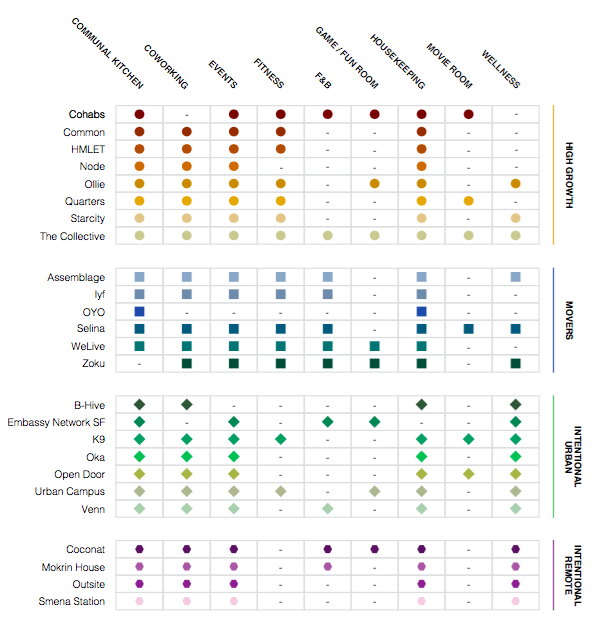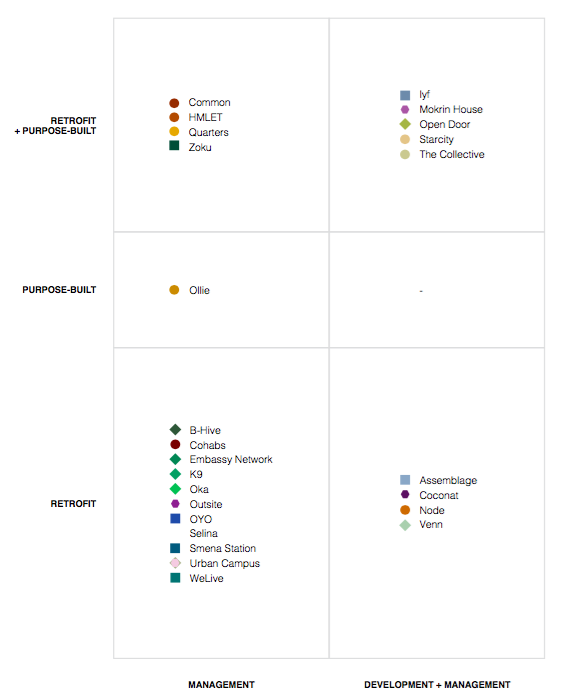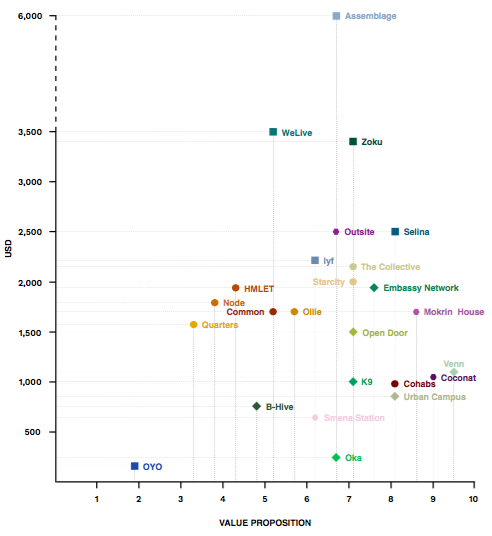We have just released the first edition of Coliving Insights for the coliving industry!
This edition – Coliving Insights Nº1 : Exploring Coliving as an Innovative Housing Solution – has been a collaboration with some of the sectors leading minds, including Gui Perdrix of Art of Co / Co-Liv, Ryan Fix of PURE, Dario Kadiev of 43North, Yoav Goldwein from Haaartland and Matt, coliving consultant of Conscious Coliving.
This is the result of a 4 month research process where we analysed 27 coliving operators and came out with 150+ pages of SWOT analyses, value propositions, operating models and market positioning. We asked ourselves some of the following questions:
- How can our built environments improve the human experience?
- What are current coliving models and how do they differ from other residential templates?
- What do they have to offer?
- Are they sustainable?
- What works and what doesn’t?
- How will they impact our built-environment and the human experience
Coliving Insights has brought together 6 contributors with a unique mix of backgrounds in an attempt to answer these questions. The result is a report which summarises theirs findings and provides and outlook on where the sector might be headed. Here are some of our takeaways:
The Amenities Arms Race
There is somewhat of an arms race in this regard but the benefits offered often appear to be token gestures. We asked ourselves which of the components are actually appreciated by tenants, in conjunction to what degree operators are able to successfully deliver and activate them. This is an important line for further investigation but we think that the right balance of amenities and services and engagement and community facilitation is one of the keys to a successful coliving community.

Coliving Property Models
Only a minority of the reviewed businesses have integrated models with full stack development capabilities and elements of real estate ownership. Operators predominantly rely on retrofitting existing structures and operating them under management contracts.
These models generally relinquish an element of control and might compromise products.
Should coliving operators develop and manage their spaces, or just one of the above?
What is the best case for coliving models?

Value Propositions
In our view the bottom line as a consumer product is how the value proposition to tenants compares against pricing. The graph below shows the results of our attempt to quantify perceived value which we have plotted against costs.
We evaluated the quality of coliving spaces according to the following: Amenities, Cluster Size, Community Events, Curation, Design, Experience, Food & Beverage, Intimate Shared Space, Location, Openness to Neighbourhood, Services and Upkeep.

These are only a few of the insights you can find in this research project. With Conscious Coliving, we are pushing the coliving industry to embody and embed the values of comunity, sustainability and wellbeing.
This research helps support that mission and highlights areas for growth. Here you can find mroe information about Coliving Insights Nº1 .
This article has been authored for you by:
Matt is responsible for designing community experience and impact strategies and measuring the social value of coliving communities. Matt is also a founding member and current Head of Community of Co-Liv and has worked for The Collective on their Impact Team.